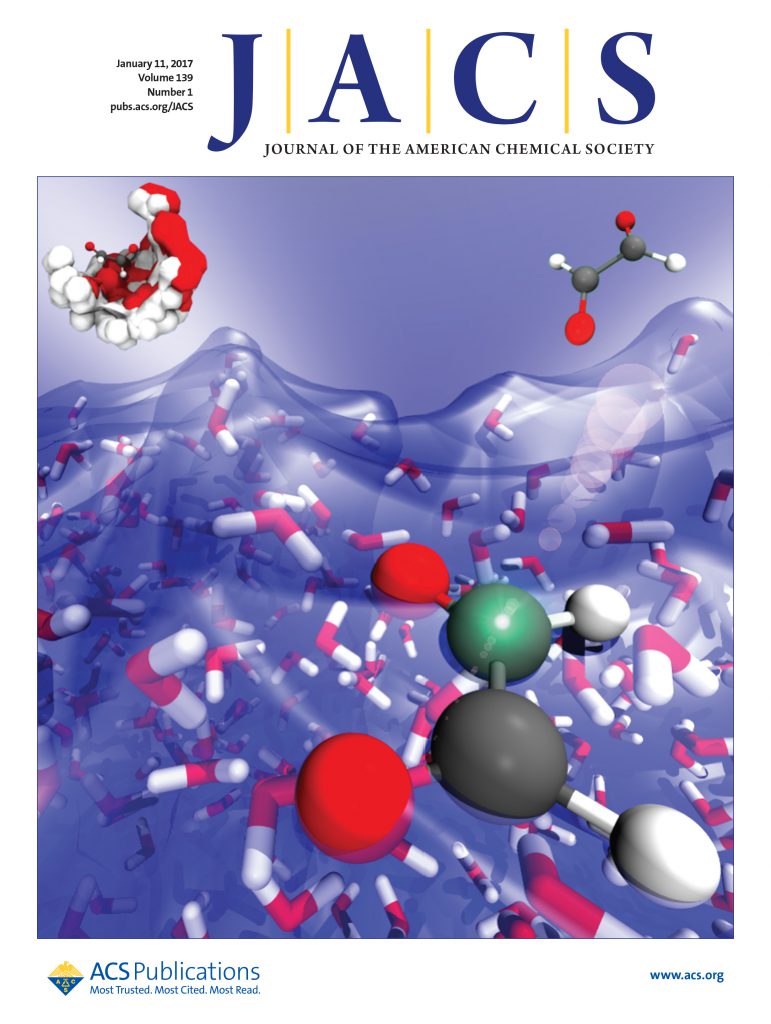Synthesis of Mesoporous Catechin Nanoparticles as Biocompatible Drug-Free Antibacterial Mesoformulation
IF 14.4
1区 化学
Q1 CHEMISTRY, MULTIDISCIPLINARY
引用次数: 0
Abstract
While polyphenolic substances stand as excellent antibacterial agents, their antimicrobial properties rely on the auxiliary support of micro-/nanostructures. Despite offering a novel avenue for enhancing polymer performance, controllable fabrication of mesoporous polymeric nanomaterials encounters significant challenges due to intricate intermolecular forces. In this article, mesoporous catechin nanoparticles have been successfully fabricated using a balanced multivariate interaction approach. The harmonization of the water–ethanol ratio and ionic strength effectively balances the forces of hydrogen bonding and π–π stacking, facilitating the controlled assembly of mesostructures. The mesoporous catechin nanoparticles exhibit a uniform spherical structure (∼100 nm), open mesopores with a diameter of ∼15 nm, and a high surface area of ∼106 m2 g–1. While exhibiting a good biocompatibility and negative surface charge, the mesoporous catechins possess outstanding antibacterial ability and function as an antibiotic mesoformulation without the necessity of loading any drugs. This mesoformulation inhibits 50% in vitro Staphylococcus aureus growth with a low concentration of ∼10 μg mL–1 and achieves complete inhibition at ∼25 μg mL–1. In a mouse wound model, accelerated wound healing and complete closure within 6–8 days are achieved. Proteomics of bacteria reveals that the excellent antibacterial property is attributed to the synergetic effect of mesoformulation’s mesostructure and the catechin molecule intervening in bacterial metabolism. Overall, this work may pave a novel way for the future exploration of polymer nanomaterials and antibiotic formulations.合成介孔儿茶素纳米粒子作为生物相容性无药抗菌介质制剂
虽然多酚物质是一种出色的抗菌剂,但其抗菌特性有赖于微/纳米结构的辅助支持。尽管介孔聚合物纳米材料为提高聚合物性能提供了一条新途径,但由于分子间作用力错综复杂,其可控制造面临着巨大挑战。本文采用平衡多元相互作用方法成功制备了介孔儿茶素纳米颗粒。水乙醇比和离子强度的协调有效地平衡了氢键力和π-π堆积力,促进了介孔结构的可控组装。介孔儿茶素纳米粒子具有均匀的球形结构(∼100 nm),开放的介孔直径为∼15 nm,表面积高达∼106 m2 g-1。介孔儿茶素具有良好的生物相容性和负表面电荷,同时还具有出色的抗菌能力,可用作抗生素介制剂,而无需添加任何药物。在体外金黄色葡萄球菌生长实验中,这种介孔配方在 10 ~ 10 μg mL-1 的低浓度下可抑制 50%的金黄色葡萄球菌生长,在 25 ~ 25 μg mL-1 时达到完全抑制。在小鼠伤口模型中,伤口愈合速度加快,并在 6-8 天内完全闭合。细菌的蛋白质组学研究表明,这种优异的抗菌性能是由于介形制剂的介形结构和儿茶素分子干预细菌代谢所产生的协同效应。总之,这项工作可能会为未来探索聚合物纳米材料和抗生素制剂铺平一条新的道路。
本文章由计算机程序翻译,如有差异,请以英文原文为准。
求助全文
约1分钟内获得全文
求助全文
来源期刊
CiteScore
24.40
自引率
6.00%
发文量
2398
审稿时长
1.6 months
期刊介绍:
The flagship journal of the American Chemical Society, known as the Journal of the American Chemical Society (JACS), has been a prestigious publication since its establishment in 1879. It holds a preeminent position in the field of chemistry and related interdisciplinary sciences. JACS is committed to disseminating cutting-edge research papers, covering a wide range of topics, and encompasses approximately 19,000 pages of Articles, Communications, and Perspectives annually. With a weekly publication frequency, JACS plays a vital role in advancing the field of chemistry by providing essential research.

 求助内容:
求助内容: 应助结果提醒方式:
应助结果提醒方式:


